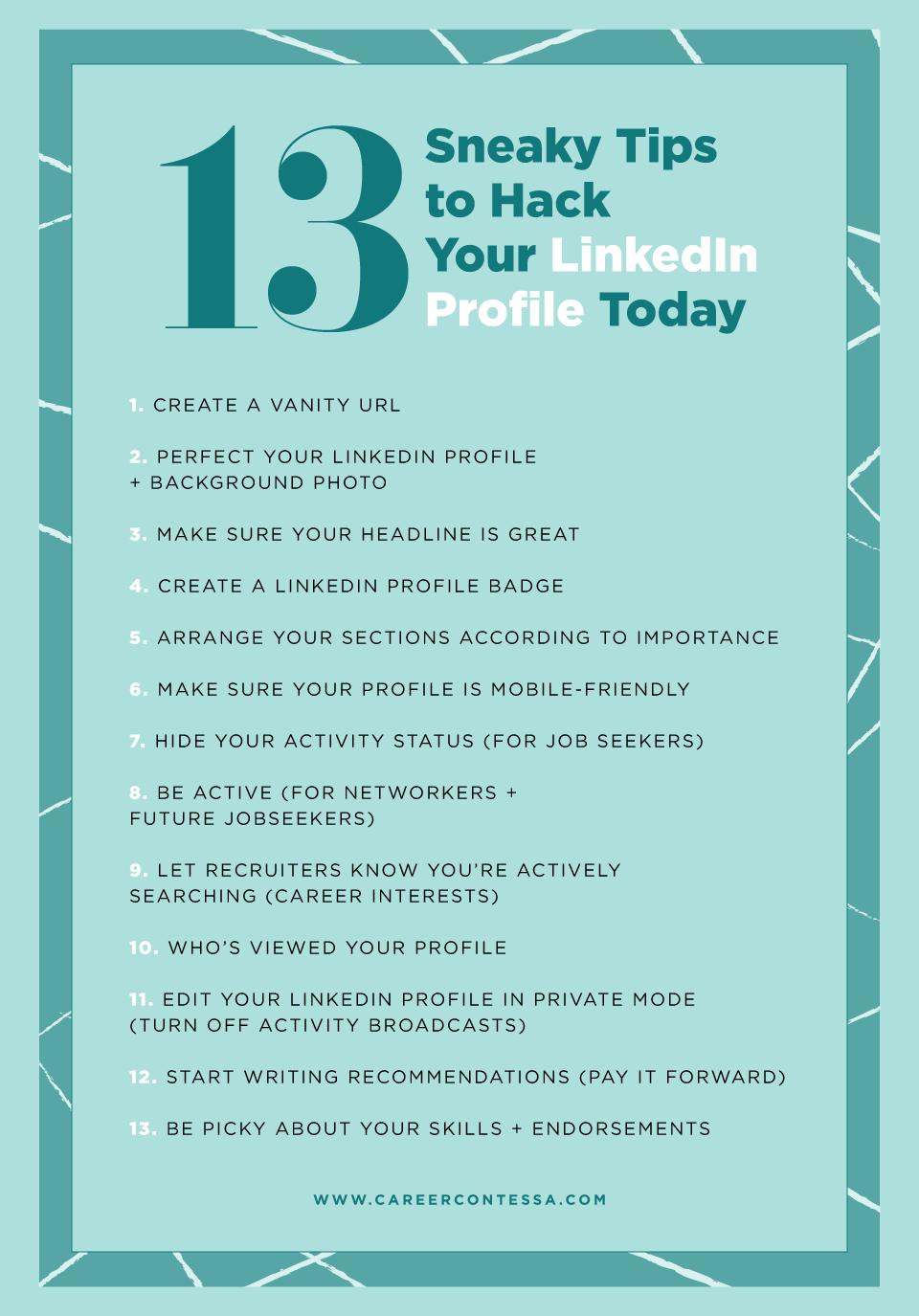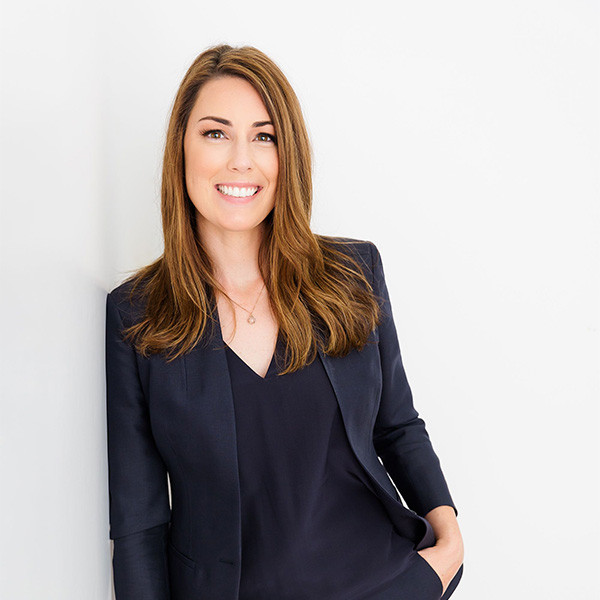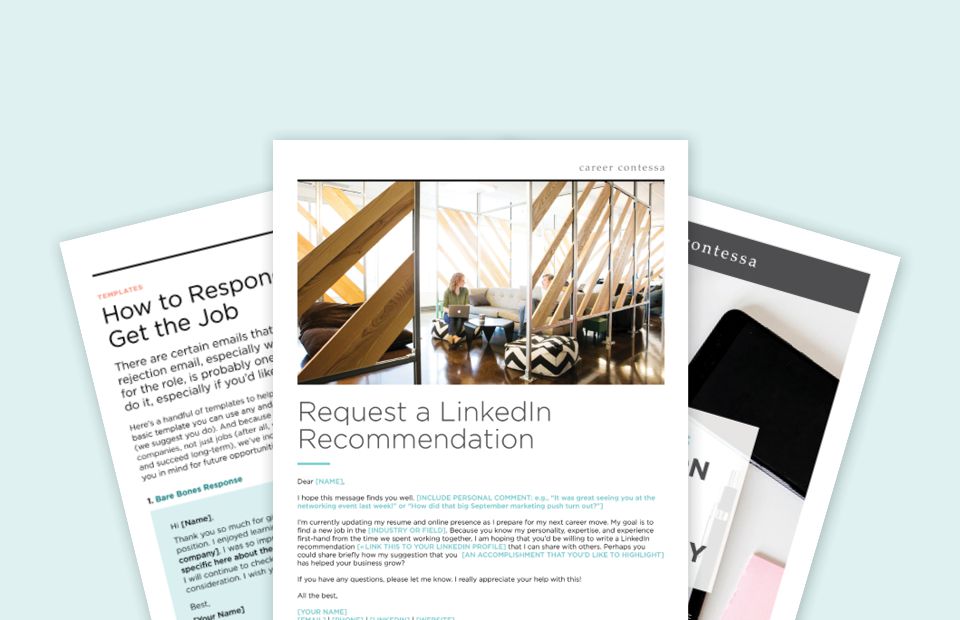Are you using your LinkedIn profile to its full potential?
Before you say "yes," let us ask you a few more questions. Is your LinkedIn headline telling future connections about your most relevant strengths? Is your LinkedIn background photo looking good? Do you even have a LinkedIn background photo?
Can your current boss see your updates if you're looking for a new job? Do you know how to inform recruiters that you're
open to new opportunities? Are you establishing yourself as an expert while you
build your network?
If the answer to any of these questions is "no," take some time to read these LinkedIn profile hacks—to
create an optimized profile that will attract recruiters and help you stand out as a professional worth knowing.
Table of Contents
The 40 Best LinkedIn Profile Tips
A
LinkedIn profile is one of the most important career tools out there. First, there’s only so much information you can fit on a resume, and you might not keep that updated with each new accomplishment. LinkedIn is the world's largest professional network where your network—and recruiters—can learn more about you anytime just by viewing your profile.
This means you'll always want your profile to be up-to-date, optimized, and professional.
- Up-to-date, so that all of your best accomplishments are included
- Optimized, so recruiters and other professionals like potential clients can find you
- Professional, so that our network is quickly impressed and excited to connect
LinkedIn makes it easy to create a great profile—if you know some of the tricks, the tools to use, and the profile sections that matter the most.
Let's dive in and jumpstart helping professional opportunities find you!
General LinkedIn Profile Tips
1. Create a Vanity URL
If you were starting a business, you probably wouldn't have a URL with nine jumbled letters and numbers. The same should apply to your LinkedIn Profile. If you're job hunting, networking, or simply doing career-y stuff on LinkedIn, the vanity URL is the first thing you should look into.
No, it shouldn't be like your AIM screen name, though HockyGrl89 is a pretty cool screen name. Make it something fairly easy—maybe mimic your work email or personal email.
Pro Tip: Make it easy. For example, our Content Director, Caileen Kehayas, has a unique first
and last name. Arguably, Caileen is an easier phonetic spelling than Kehayas, so she opted for a
/caileenk profile URL. If you have a common name, you might have to be a little more creative about making your URL unique.
2. Have a Great LinkedIn Profile Photo + Background Photo
We're deeply sorry to use this analogy, but Linkedin could be a place to showcase "your brand." Take this in stride because it's actually really refreshing to personalize your professional persona wherever you can. To steal from our CEO Lauren's favorite
glitter and glue analogy:
- Glue: The bulk of your LinkedIn profile is going to be glue—very professional and informative.
- Glitter: Your LinkedIn profile picture is a chance to add a little glitter to your profile.
But, let's talk more about your profile photo. Ahem, your LinkedIn profile photo. There are plenty of social media platforms that are the perfect place for a cute beach selfie, a fun dancing photo, or a gorgeous shot of you at your wedding. Linkedin is not the place.
No, we don't all have money to purchase a professional headshot. I mean, who even has the time to coordinate that? The good news is that we can fake it pretty well.
Here's our guide to getting a "professional headshot" to use for your LinkedIn profile photo. Your iPhone or smartphone probably has a high-enough resolution camera to ensure your picture is clear and crisp.
The goal of your headshot is to showcase your professionalism. This means no cropped photos from your friend's wedding. Be appropriately dressed—dark colors stand out a bit better—and use a neutral background. And for the best lighting, stand in front of a window.
Next: your background cover. This is that long banner that goes behind your profile photo, and it's one of the first things people see. Consider what you want your first impression to convey? At a minimum, select something that is inoffensive like a landscape image, or graphic you love, or you can customize the banner with words. Some people will include their company website, email address, or something else they want to promote.
Canva has lots of free LinkedIn banner options as well.
3. Know Which Keywords You Should Be Using and Why
LinkedIn works like a search algorithm, and that means they depend on keywords to deliver search results.
Whenever a person is searching for someone with skills and experience like yours, you want to turn up in those search results. But you can't if you're not identifying and then including specific keywords throughout your profile.
A good place to start is to think about who the audience is that will be reading your profile or looking for your experience. What will they want to see? This might be specific skills, knowledge of software programs that are used in your job, and/or certain work experiences.
Next, create a list of 10-15 keywords. Here are a few good places to find these:
- Using your current job title, look up four or five job descriptions. What keywords are mentioned again and again in all of those postings? Write them down.
- Look at the LinkedIn profiles of people in similar roles or with similar experiences. What keywords do you see mentioned throughout?
- Look at the skills section of LinkedIn and see what appears. Are there specific hard skills that are being suggested to you? All of these are keywords, so pick the ones that are relevant to you.
- When in doubt, stick to hard skills. Soft skills can be included in other ways, but for our list of keywords, we want to focus on your technical skills, credentials, position titles, and software or tools that are relevant in the industry—because those are the keywords your target audience will be checking for.
An example of this is someone working in content marketing. "Content marketing" is a keyword, but any recruiter will narrow that down a bit more to help them find candidates who have even more specialized expertise. So, your job is to use the tips above, and maybe you come up with the following list:
- Content marketing
- Content writer
- Content manager
- Blogging
- Website copy
- E-books
- Webinars
- White papers
- CMS
- Wordpress
- Storytelling
- Email marketing strategies
- Lead nurturing
- SEO
- Ahrefs
- Paid search
- Social media marketing
The list above represents hard skills and specific software programs. These were all keywords we saw mentioned again and again in job descriptions for "content marketing."
4. Add Keywords Throughout Your Profile
Once you know what your keywords are, you will want to include them throughout the sections of your LinkedIn profile. Why? Because the LinkedIn algorithm will search your headline, summary, and experience sections first for the keywords that a person is searching for.
In other words, when a recruiter uses the LinkedIn recruitment tools to search for a "content writer with WordPress experience," the algorithm will pull up profiles that include the words "content writer" and "WordPress."
The tricky part is that you want to naturally weave your keywords into your profile. They need to flow with the rest of your writing and when they don't, we have a hack you can try! At the bottom of your summary section, you include a running list of "specialties" like our founder Lauren McGoodwin did
here.
5. Avoid Jargon and Buzzwords
One thing you don't want to stuff your profile with is
buzzwords and business
jargon. These are the words that you see all the time on profiles and in job descriptions—and they sound nice like "hardworking," "motivated," and "successful,"—but they aren't really showing us what the person can do or the skills they have. Alone, these words don’t mean anything because no one is going to publicly announce themselves as "not successful" on LinkedIn.
The trick here is to add context to any buzzwords. Ask yourself how you can prove that you're hardworking through a concrete example. Create a stronger message by combining a buzzword with specific keywords that help explain it to the reader.
6. Create a Dazzling Headline
Your headline should include more than just your job title. It's also one of the sections that the LinkedIn algorithm searches through for keywords so you want to include a few if you can.
Instead of listing "what you do," consider writing "what you do" plus "how you do it." For example, if you're a graphic designer, don't stop at "Graphic Designer." Add where your specialties lie—whether that's web design, packaging goods design, or your perfected expertise in certain software.
- Instead of: Graphic Designer
- Try this: Graphic Designer & Illustrator | Web Design | Photography | Adobe Creative Suite Master
The second example includes more keywords and tells us more about your expertise.
If your role doesn't lend itself to any of the above, you can also consider using a few keywords or phrases that are used to describe your job. For example, if you're an administrative sssistant, you could add other terms to describe the work you do like "support and operations," "customer experience," "executive assistant," or any other common words that more specifically describe what you do.
7. Complete Your Profile
Another hack to make sure your profile is suggested in search results by LinkedIn is to complete your profile. LinkedIn assigns different strengths to profiles based on their completeness, and there’s a massive advantage to being at the highest strength. You've probably seen this because LinkedIn will encourage you to fill out additional sections in order to reach "all-star" strength status.
Additionally, a completed profile is helpful whenever a connection is looking you up or after you apply for a job and a recruiter goes to look at your profile. An empty or barely completed profile doesn't make a great first impression.
A complete profile will include a cover photo, banner, headline, summary, experience, skills, and more. Start by filling out all of the suggested sections for LinkedIn and then add new sections if they are relevant.
8. Spend Time Writing a Summary
As we mentioned above, one of the sections that matters a lot to LinkedIn is your
summary.
You have a 2000-character limit because LinkedIn wants you to use this section to tell your story and they know you will need the space to write that.
Storytelling,
personal branding, and giving your
elevator pitch in a concise yet engaging way are some of the hardest things for any of us to do. We get that. Let's break down what to write in your summary section.
Pro Tip: The Who, What, When, Where + Why: The goal of your summary is for you to tell us who you are, what you do and what you've done in the past, where you're going, and what you want to be known for or your area of expertise. If you're trying to transition careers, you can change this to what future you would like to be known for.
Some questions to ask yourself:
- What sets you apart from your peers?
- How would your colleagues describe you?
- What expertise do you have?
- What are you interested in and why?
- What are your unique skills?
- What's your work style?
- What do you value?
- What's your biggest professional accomplishment?
- What are you responsible for in your current role and how do you accomplish that?
- What are your future goals?
Once you've reflected on everything we've mentioned above, it's time to come up with a one-sentence branding statement. This will help guide what you actually write in your summary because you will expand on it. Here are some personal branding statement examples:
- Audio producer obsessed with true-crime storytelling and a passion for disrupting the podcasting industry.
- Creative SEO-driven content for humans and robots alike + one toddler's punching bag.
- Storyteller and brand strategist passionate about environmental sustainability, protecting wildlife, and expanding access to opportunities, to name a few.
Next, use your one-line brand statement and expand on that to share what makes you you and support it by adding context. These could be the goals and key accomplishments that reflect your skills.
Pro Tip: Include Your Specialties! Remember that you're describing where you came from and where you’re going—you’re telling your story. If you can weave in some of your keywords, great. If not, you can borrow
this hack from our founder and include a list of your "specialties" at the bottom which are all keywords.
Feel free to let your personality come through in your summary, too. Include personal elements and interests such as being a working parent or having a passion for true-crime podcasts. You can also professionally share your point of view on something relevant. For example, if you work for a media company, maybe you include your thoughts on the "streaming wars."
9. Use Your Experience Section to Highlight Your Accomplishments, Too
Another crucial part of your LinkedIn profile is the "experience" section.
Please don't just write your job title and company in the work experience section. Similar to how you use bullet points on your resume to highlight your relevant skills and accomplishments, you want to do the same on your LinkedIn profile. Unlike your resume, you have more freedom with the formatting. You can use short paragraphs, bullet points, or a combination of the two.
Pro Tip: Make It a Combo! We recommend using a combination. This means under each experience, include a short overview of the experience and then some bullet points that highlight your accomplishments and skills. Think of these as the highlight reel of that specific job. Again, weave in your keywords whenever you can into this section.
Because humans will be reading this section, you want to make it easy for them to learn about you. Impress by using sub-headers like "Key Accomplishments" with your best achievements underneath.
This is a great section to share results, quantitative details, and other specifics.
10. Create a LinkedIn Profile Badge
There are many secrets to LinkedIn—and we think this is a pretty big one. Did you know that LinkedIn created a
Profile Badge for the purpose of inserting it into your own blog, website, or personal portfolio?
If you have a blog or personal portfolio, take advantage of the Profile Badge. It's already formatted, coded, and ready to share. They even come in several formats and sizes to best suit your needs.
11. Arrange Your Information in Order of Importance
Linkedin allows you to include (or leave out) several sections. Showcase what you want to showcase.
The LinkedIn profile sections include:
- Intro
- About
- Background (Work Experience, Education, Licenses + Certifications, Volunteer Experience)
- Skills
- Accomplishments (Publications, Patents, Courses, Projects, Honors + Awards, Test Scores, Languages, Organizations)
- Additional Information
You can even add additional sections if you have relevant information to add. Under your headline is an option to "add profile section" and a box will pop up like this with options:
One of the latest sections you can add (that we love!) is a
career break!
12. Make Sure Your LinkedIn Profile Is Mobile-Friendly
About
40 percent of LinkedIn users are using the mobile app. While LinkedIn itself is mobile-friendly, you will want to ensure that your profile is, too.
Your mobile device will preview up to 42 characters of your headline. Additionally, it will only preview up to 140 characters of your "About" section—the exact length of the original tweet (remember that?). Make sure they count.
Frontload your headline and your summary with the most important keywords and details about you. Additionally, it will share your latest three pieces of activity—whether you shared, commented on, or liked an article. Under "Recommendations," the LinkedIn app will only show your most recent recommendation. Make sure it's a good one!
The best way to make sure your LinkedIn profile is impressive on mobile is by taking a look at yourself. Curate where you can. Make sure your "About" section isn't getting cut off before you share crucial information.
13. Hide Your Activity Status (Psst, Job Seekers, This Tip Is for You)
This is an important hack, especially for employed job seekers. LinkedIn can actually be a pretty dangerous place to job search—we have heard horror stories of bosses being incorrectly notified that their employees gained new employment.
When LinkedIn debuted its "status" green dots, some job seekers were pretty upset. All of a sudden, their bosses had a clear view of their activity.
For those of you unfamiliar, this is what they mean:
- The green dot with a white center notifies users that you are available via the LinkedIn app on your mobile device.
- The solid green dot is like a megaphone, declaring, "HELLO EVERYBODY, I AM ON LINKEDIN RIGHT NOW!"
The green dot is great if you want to make connections and use LinkedIn to network. However, when you're job searching under the radar, it's not so great. Here's how to
get rid of your active status so you can browse sans green dots.
14. Be Active on LinkedIn (For Networking!)
Now, to contradict everything we said in earlier tips...just kidding. This tip is specifically for those of us looking to build our careers—but who aren't looking for a career change right now.
LinkedIn is the best place to
make a professional connection for the (future) purpose of propelling or
transitioning your career. Just like your running feed of images and stories you post to Instagram, you can use LinkedIn to create a timeline of interests, connections, and professional progress.
- Did you go to market with an amazing new product? Post the press release!
- Did you write your first piece on Forbes? Post it.
- Did one of your favorite corporations launch an amazing initiative? Share that + share your feelings about it.
While LinkedIn, unlike other social platforms, is not the place for baby pictures or wedding announcements, it's a place for workplace and
career inspiration. It's a place to create and nurture long-term professional relationships—and it's often as easy as a mention and a tag!
15. Know Who's Viewed Your Profile
When you're looking for a job or networking on LinkedIn, seeing who has viewed your profile can be pretty exciting. Getting more profile views can help the right people find you. Of course, make sure your profile is looking spiffy before reaching out to lots of potential connections.
More than anything else, it's actually fun to see who's looking at your profile. On your LinkedIn homepage, the "
Who's viewed your profile" section will appear on the left side of your screen just under your profile picture and title. Keep in mind that some LinkedIn users choose to browse privately, so you might not see everyone—but you can get a pretty good idea.
16. Edit Your LinkedIn Profile in Private Mode (Turn Off Activity Broadcasts)
If you've ever built a website, a portfolio, or a similar project that takes time before achieving a final status, you're familiar with the feeling of not wanting anyone to see the work in progress.
Good news. While you work on overhauling your entire LinkedIn profile, you can set it to private. Simply go to your
privacy settings and edit your profile's public visibility until you're ready to reveal it to the world.
Once you are finished—and your sparkling LinkedIn profile is ready to be revered by recruiters everywhere—you can set your privacy settings as widely or as limited as you would like. You can choose whether you want your profile, LinkedIn photo, and other elements of your profile to be public, semi-public, or entirely hidden at any time.
17. Start Writing Recommendations
You know the old saying, "The best way to get a LinkedIn recommendation is to give a LinkedIn recommendation."
Okay, maybe it's not really an old saying, but it applies! Getting recommendations is a great way to show recruiters and hiring managers what your previous employers or coworkers experienced while working with you. While you can ask for a recommendation, we think the best way to get one is to give one first. Write a stunning summary for your old manager, then maybe submit a request for her to return the favor.
LinkedIn's Recommendations are (in our opinion) a vastly underestimated tool. Who wouldn't want a
series of evergreen recommendations written by real people, attached to their real accounts? Get to recommending!
18. Be Picky About Your Skills + Endorsements
But guess what? They still (kind of) matter. Make sure all of the endorsements listed on your LinkedIn profile are relevant to the opportunities and future employers you are interested in. If you have acquired a good amount of skills and endorsements by now, go through them. You can toggle their visibility to on or off.
Let your future employers see the skills you want them to see—rather than being distracted by the fact that your 6th-grade art teacher has endorsed you for "Painting."
19. Thoughtfully Build Your Connections
Because you have a public profile, you're going to get connection requests. Many of them will be from people you know. These might be current or past coworkers, alumni, clients, or people you don't know directly.
We call these "thoughtful connections" because they are people you would naturally want in your network—or they are in your in-person network and you're just making it LinkedIn official. It's a great idea to consistently add new connections. LinkedIn loves to see you're engaged on the platform and this is an easy hack you can do on a regular basis.
Your connections will also help dictate what you see in your feed. You can stay updated on their recent news and accomplishments without having to set up a million coffee dates.
Next, you will want to expand to
cold connections on LinkedIn. These are people you don't know
yet.Some cold connections to make include:
- A recruiter at a company you admire
- A senior-level individual that you'd like to have an informational interview with
- Someone with a professional background similar to yours
It doesn't really matter why you want to connect with them—the key here is that you have put some thought behind why you're sending the request.
When you are asking for a cold contact to connect on LinkedIn, we always recommend including a note. They are more likely to accept, and having your connections accept is just another way to make LinkedIn happy with your profile.
Lastly, you're going to get spam requests. You might even get weird messages. Don't connect with everyone. This isn't a popularity contest, so connect with the people you really want to connect with and ignore the others.
Job Search LinkedIn Profile Tips
20. Let Recruiters Know You're Actively Job Searching
Recruiters and potential employers aren't clairvoyant, but they are very active on LinkedIn. If you're looking for new opportunities, let recruiters know.
Under Career Interests, switch the toggle over to let recruiters know you're open to new paths. You can also be more specific and let recruiters know what you're looking for from these four options:
- Actively applying
- Casually looking
- Not looking, but open to offers
- Not open to offers
You can also set the locations, how close to your current home you'd like your opportunities, whether you're open to working remotely, and how much work you're looking for (i.e., full-time, contract, part-time, internship, volunteer, or temporary).
21. Download Your First Connections
According to HubSpot,
85 percent of jobs are filled through networking.
70 percent of jobs are never even published publicly, meaning that so many opportunities arise simply from networking with people. And
networking is easier with people you already know like your first connections on LinkedIn.
Even easier, LinkedIn will send you a list of your first-degree connections so you can send a personal email to each one
letting them know you're job searching. To download the list, follow these steps:
- Go to "Me" > Settings & Privacy
- Choose "Get a Copy of Your Data"
- Click the 2nd option
- Select "Connections"
- Request the Archive
Now you can send networking messages directly via email, which should have a higher response rate!
22. Find Content Creators
Another great way to network is to connect with other networkers. An easy way to connect with people who are thought leaders or engaged in their communities is by finding content creators. Plus, more and more LinkedIn features are encouraging people to share content so you might get ideas for sharing your own expertise and opinions.
To get started, search LinkedIn for job-related keywords and then filter for "Posts." Next, go to "All Filters > Author Company" and add your target companies. Now you can network with content creators at the companies you're most interested in, and you have a natural "in" for reaching out!
23. Connect With Career Changers
If you're looking to make a
career transition, then you'll want to connect with other career changers. Not only will they help you stay motivated (yes, you can successfully change careers!), but they can also share insight into how they did it!
Start by searching for your target job and then filter "People." Next, add 10 people to the "Companies" filter. Your final step is to add 10 companies in your current industry to "Past Companies." Now you have a list of people who went from your current industry to the one you want to transition into.
24. See Who's Hiring
Many recruiters, hiring managers, and even future coworkers will post about open roles on LinkedIn. This is a great opportunity to network with them directly about an open role and send your resume to an actual person!
To find these people, search for your target job title + hiring. Then, filter for "Posts." Next, go to All Filters > Author Company and add your target companies. Review the postings and apply for the jobs that interest you. Then you can message the person directly about your interest—and send them your resume!
25. Research Company Culture
Company culture can really make or break your experience at work. Too many
toxic work cultures drive good employees to quit! Naturally, you will want to know which companies are actually great vs. just bragging about that on their company website. The best way to get the
real scoop on company culture is from ex-employees. They have no incentive to lie to you!
To find past employees at the companies you're interested in run a blank search. Then, add the name of the company to the "Past Company" filter. Now you can see every person who used to work at that company. We'd recommend reaching out to the ones who left for better opportunities and left within the last 1-2 years.
26. Research Salaries in States With Salary Transparency Laws
Salary transparency laws are going into effect in various states, but Colorado paved the way. And since most companies still do not include salary ranges in the job postings, it can be helpful to use a job posting in Colorado to give you a ballpark of the salary range before you apply.
All you have to do is search for your target job title...in Colorado. Then, adjust the salary range for the cost of living in your area. Now you have a salary data point that can help you figure out
your desired salary range.
27. Include a Current Job Entry, Even When Unemployed
When you're job searching, you're more likely to show up in a recruiter's search results if you're currently "employed." This means that under your experience, you're still "present" at a job. If you
quit or were
laid off from your last job, you can update the month and year under experience to reflect that you're no longer working there. Next, we recommend adding a new work experience that is present with the current time to showcase what you're doing now.
Maybe you're working on a
side hustle, volunteering, or caring for your family. All of these are great,
and you're learning skills whether you know it or not. We recommend including this, so recruiters are more likely to get your profile to show up in their search results.
28. Earn Skill Badges
In recent years LinkedIn has introduced a slew of new features to help job searchers. One of these features is their
skill assessments, a variety of 15-question multiple-choice quizzes. If you click on "Jobs" from the LinkedIn homepage, you will see a menu of these features on the left-hand side of your screen. That's where you will find the skill assessments, and LinkedIn will even start by recommending the ones they think you should start with.
Again, LinkedIn loves when a person is engaged with the platform, so not only will you be highlighting your expertise, but you're also going to show recruiters how serious you are about finding a new role.
29. Include Examples of Your Work
There's nothing more powerful than being able to back up your amazing work
with real examples! Recruiters also love this because it can save them a step in the interview process. If they can quickly review your profile and look at examples of your work to know you're a match for what they need, it saves them time in reaching out to set up an initial
phone interview.
You can add examples of your work under each work experience and with some of the "additional" sections like publications, projects, or courses.
If you don't have a direct URL link to include, our hack is to upload a screenshot and then include information in the description and/or a link if you have one. Not only does adding visual examples help break up the wordiness of your profile, but it adds legitimacy to what you say you can do.
30. Keep an Open Profile
The default option on LinkedIn is to make your profile public and to allow anyone to send you a connection request. When you're job searching, you will especially want your profile to be easily accessible. This means recruiters, hiring managers, and—when you land that interview—the interviewers can also learn more about you.
If you've made your profile private at all, change it back while job searching. Also, make sure your contact information is updated. This is especially important with the email address associated with your account.
31. Respond to InMail Messages
Did you know that just by responding to the InMail messages, you can increase your chances of showing up in the recruiter's search results?
Yes, for real. That's because LinkedIn wants recruiters to find talent so when they know you are likely to respond, the algorithm is more likely to include your profile in search results.
This doesn't mean you need to take every phone call or interview. You can respond to
decline a job interview, but just by responding you are increasing the odds that other recruiters will see your profile in the future.
32. Follow Your Target Companies
We are big advocates of using
target companies to guide your job search. One of the best places to learn about companies to see if they are a fit for your career goals is via LinkedIn. Companies can create a "Company Page" where they highlight their culture, share updates via posts, show the profiles of their people, and include any job postings.
When you follow a company, you can easily stay updated on new job postings—LinkedIn will even let you set job alerts—and you can look through the profiles of their employees. We highly recommend you take time to follow your dream companies and engage with their pages.
33. Fill Your Skills Gaps
When you're searching for a new job, and you're reading the job descriptions carefully, you might notice there is a specific skill that is mentioned over and over again. You might be bummed to realize that you don't have that skill set....well, not yet.
The other benefit of filling your skills gaps with online courses is that you then add that keyword to your profile. For example, if you need to learn how to use Salesforce software you can find a class on it. Next, you can add that under a "Course" section.
You can also include your new understanding in your current work experience. Let recruiters what you're doing in your free time while you job search.
34. Get Interview Feedback
Another new feature LinkedIn has added is called Interview Prep. It works like this: record a video to practice your response to
common job interview questions and get instant feedback to take your interview skills to the next level.
Plus, LinkedIn will even provide examples of answers given by experts to help you prep for your next interview.
35. Add Recruiters as Connections
When you're applying for a job, we recommend sending your resume to a real person as well as applying via the site's online application process. One of the ways to find a real person's email address is by adding them as a connection on LinkedIn and viewing their contact information.
Some of the best people to send your resume to will be the in-house recruiters at your target company. The trick here is to make sure you're sending it to the right recruiter, so pay attention to what they put in their profile.
For example, if the recruiter mentions they hire for ad sales roles only, and you're applying to work in communications, you can still add them as a connection with a note. However, they aren't the right person to send your resume and letter of interest to.
Pro Tip: Advanced Networking. Our best advice is to find a few recruiters or hiring managers at your target companies and connect with them before you are interested in a job. When a job you're excited about does open, you will be ready with their contact information. Plus, it's great to start building a relationship with a recruiter before you need something from them!
36. Make Your Resume and LinkedIn Profile Compliment Each Other
Your resume should be specifically tailored to the company and job you're applying to. Meanwhile, your LinkedIn profile can showcase a more broad overview of your experience, skills, etc.
Pro Tip: Your Resume and Your LinkedIn Are Siblings, Not Twins. The goal is to make sure your resume and your LinkedIn are neither exact replicas nor total departures from each other. They should work together to paint the picture of who you are, what you've accomplished in your career so far, and where you're going.
This means the bullet points in your resume don't have to match what you write in your LinkedIn experience section, but often times people will include more on LinkedIn and only put specific information on their resume.
Before you submit your resume for a job, review it next to your LinkedIn profile and see if the recruiter would know that both of these documents are talking about the same person. If you answer "yes," then you've done your job correctly!
37. Link to Your LinkedIn Profile on Your Resume...
A big pet peeve of recruiters is having to hunt and peck to find information about you from your resume. For this reason, we always recommend including a link to your LinkedIn profile under the "Contact" section of your resume.
38. And Your Email Signature
You can also add a link to your LinkedIn profile in your email signature. This is free advertising to anyone you're emailing such as connections for networking, recruiters, and potential clients. It's an easy way to expand your network and showcase your professional brand with very little effort.
39. Get Interested—And Follow Thought Leaders
Companies love hiring people with a genuine interest and passion for a job, company, and industry. One way you can do this using LinkedIn is by following thought leaders, subscribing to LinkedIn newsletters, and staying updated on industry news. Once you start to follow and engage with a few people, LinkedIn will provide more suggestions.
Also, because you're showing LinkedIn what you're interested in, their algorithm will again reward this behavior and your LinkedIn News Feed will also show more relevant news, updates from people you might be interested in, etc.
By staying updated on news, trends, and the career moves of other people, you can leverage that in a future interview or networking opportunity.
40. Attend Events
Lastly, if you want to get more involved, learn something, and find great networking opportunities, check out the
events that LinkedIn members are hosting.
"Events" is another new feature that we love. We think it's better to use your time joining LinkedIn Groups. People usually attend these events in real time, so you can build connections live, ask questions, etc. Plus, they are free!














